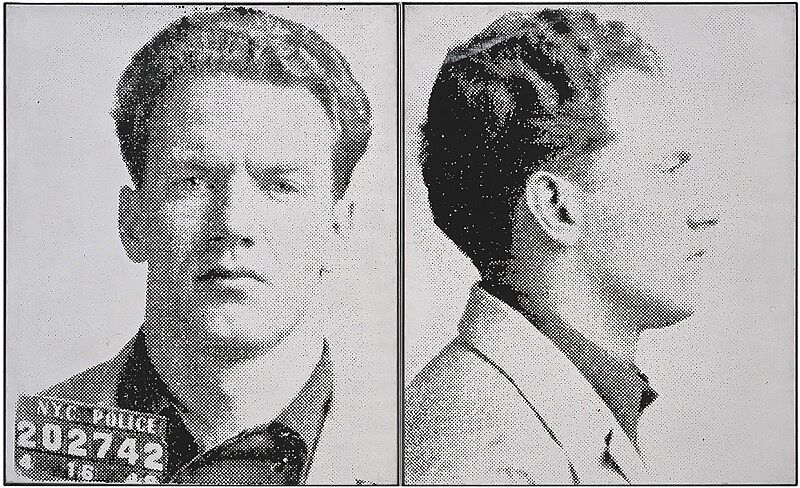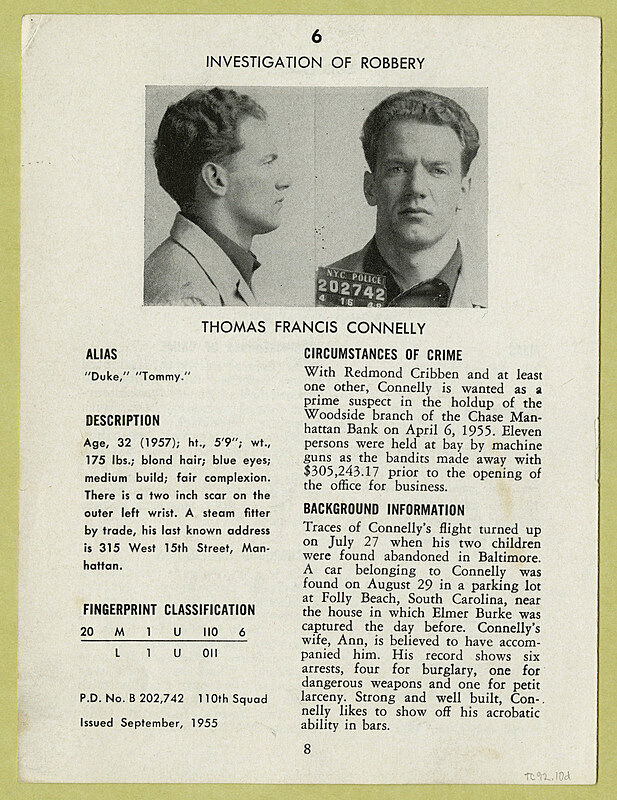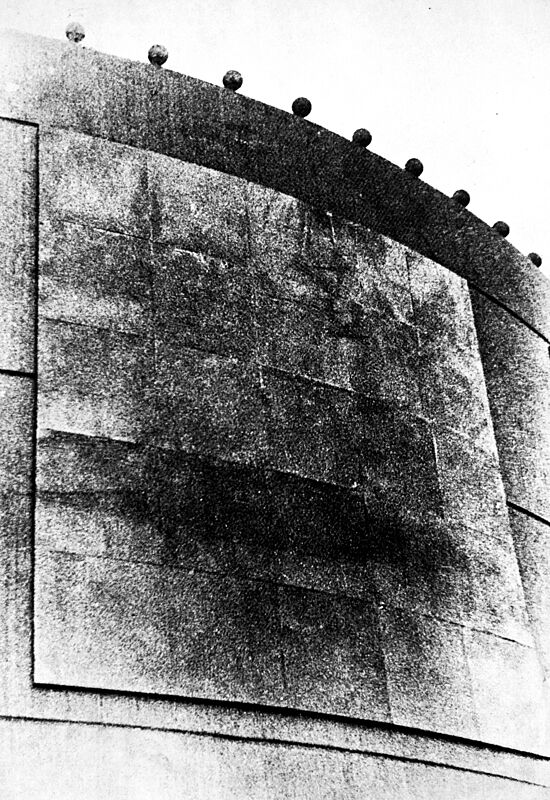Andy Warhol— From A to B and Back Again | Art & Artists
Nov 12, 2018–Mar 31, 2019
Andy Warhol— From A to B and Back Again | Art & Artists
Most Wanted Men
6
Portraiture was a career-long preoccupation for Warhol, and his subjects included not only celebrities but socialites, art collectors, friends, alleged criminals, an insurance company president, and the artist himself. Unlike traditional painted portraits, his were created using different types of photographs—performative photo-booth strips, deadpan corporate publicity headshots, and dehumanizing mug shots—which not only pictured their subjects but framed them in social and cultural terms.
Most Wanted Men No. 6, Thomas Francis C., 1964
Warhol’s Most Wanted Men (1964) originated as his first public art project, a mural commission from architect Philip Johnson for the New York State Pavilion at the 1964 World’s Fair in Flushing Meadows, Queens. Warhol found his source images for the work in a booklet of photographs titled The Thirteen Most Wanted, circulated by the New York Police Department. Although the booklet’s producers were no doubt oblivious to any possible homoerotic double reading of “wanted” men, it seems to have been obvious to Warhol, who appropriated the concept for two nearly simultaneous projects made with very different audiences in mind: the public mural, Thirteen Most Wanted Men, and an unambiguously homoerotic film series, The Thirteen Most Beautiful Boys (1964–66). Alongside its other qualities, the mural constituted a sophisticated essay on the antihero, taking Warhol’s selection of bad-boy celebrities—Marlon Brando, James Dean, and Elvis Presley—to another level. Before the fair opened, Warhol was asked to remove the mural. The fair’s organizers found the subject matter too controversial, but not because of covert gay references: they were keen to promote an upbeat image and loath to implicitly condemn people who, though wanted for arrest, had not stood trial. Warhol did not remove the images; instead, he acceded to having the mural painted over in silver.
“In one way I was glad the mural was gone: now I wouldn’t have to feel responsible if one of the criminals ever got turned in to the FBI because someone had recognized him from my pictures.”
-
-
-
1964: The New York World's Fair
1964: The New York World's Fair
—The Atlantic -
Son Discovers His Father’s Life of Crime Is Now a Work of Art by Warhol
Son Discovers His Father’s Life of Crime Is Now a Work of Art by Warhol
—The New York Times -
13 Most Wanted Men: Andy Warhol and the 1964 World’s Fair
13 Most Wanted Men: Andy Warhol and the 1964 World’s Fair
—The Queens Museum -
Hear Richard Meyer on the subtext beneath these “wanted poster” portraits
0:00
Hear Richard Meyer on the subtext beneath these “wanted poster” portraits
0:00
-
Related works 6
Related artworks
From the Collection



